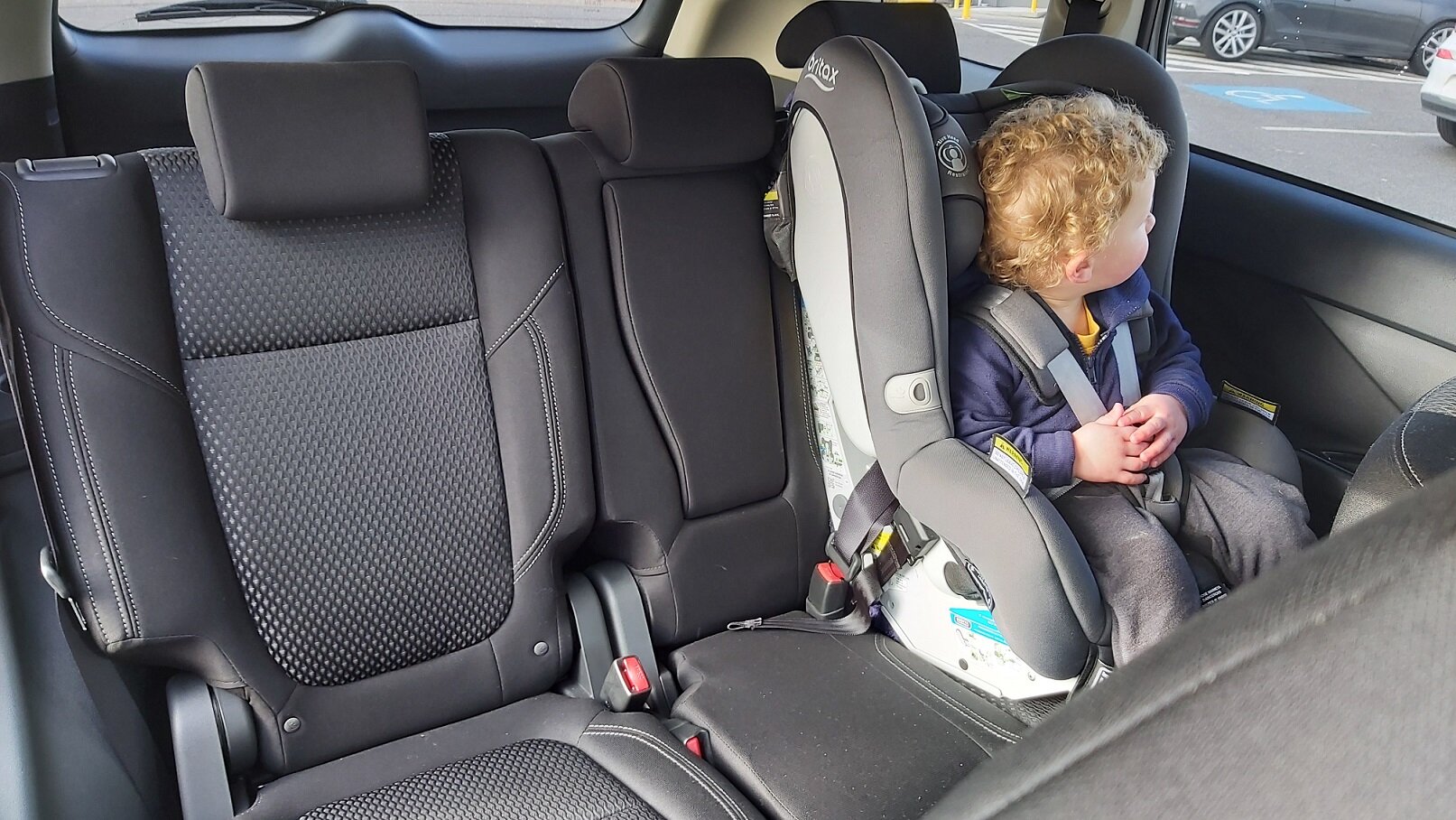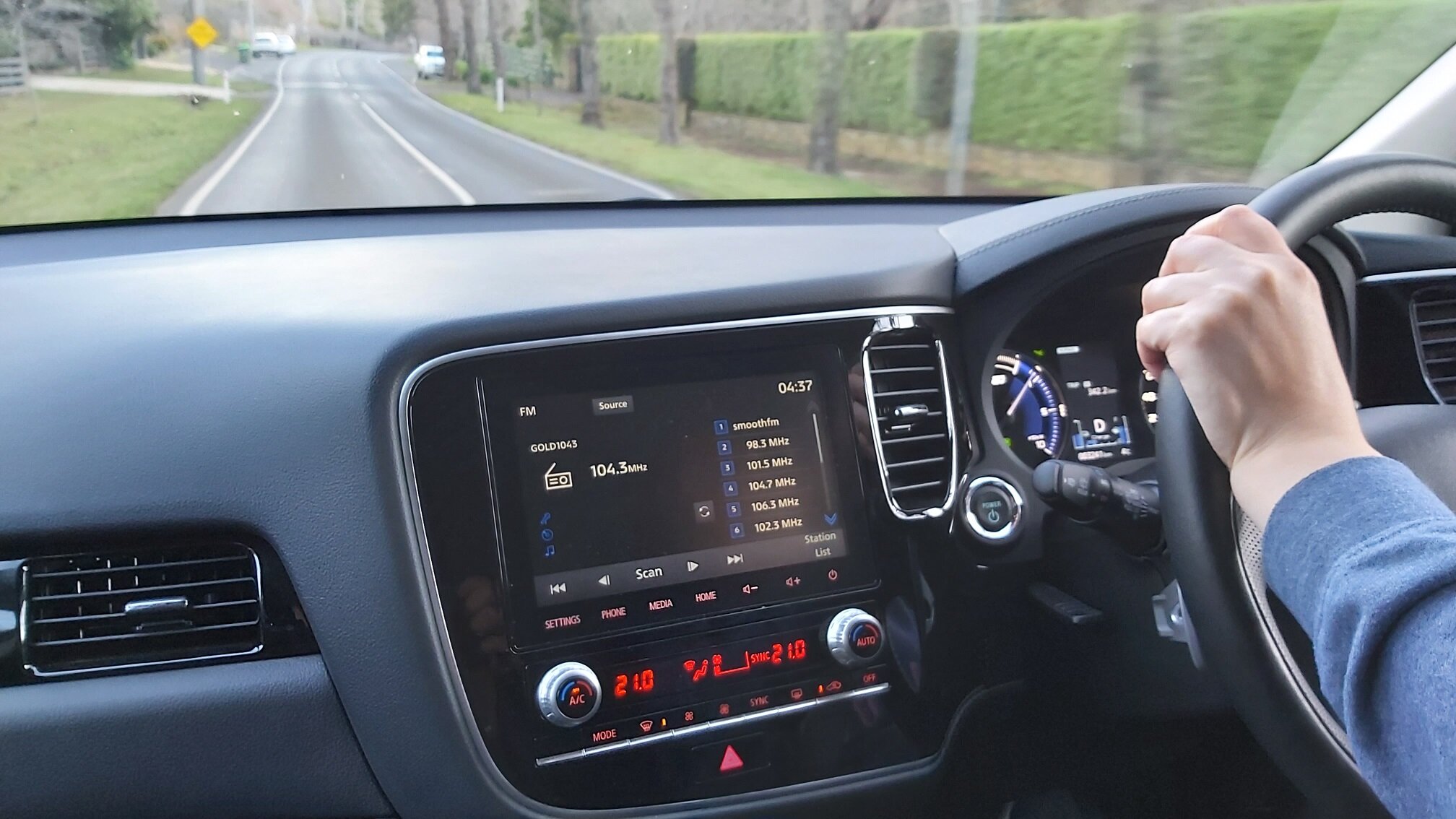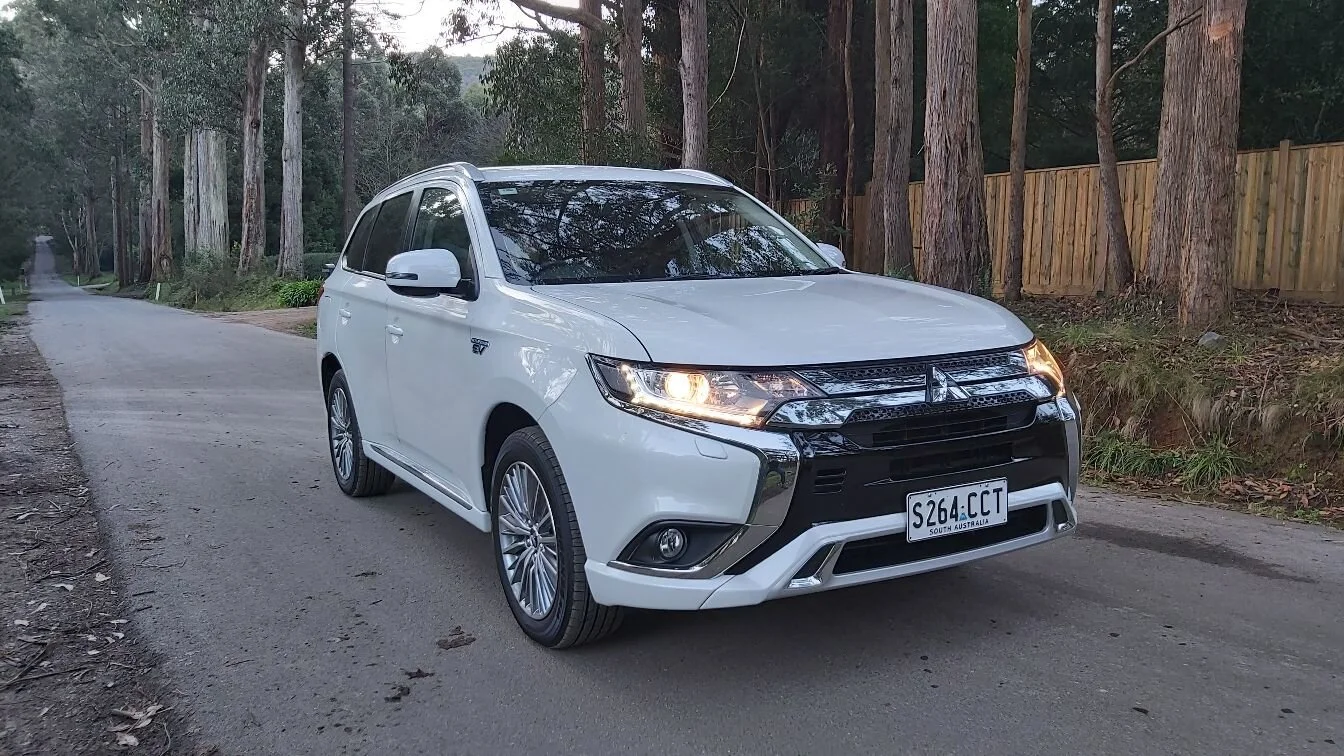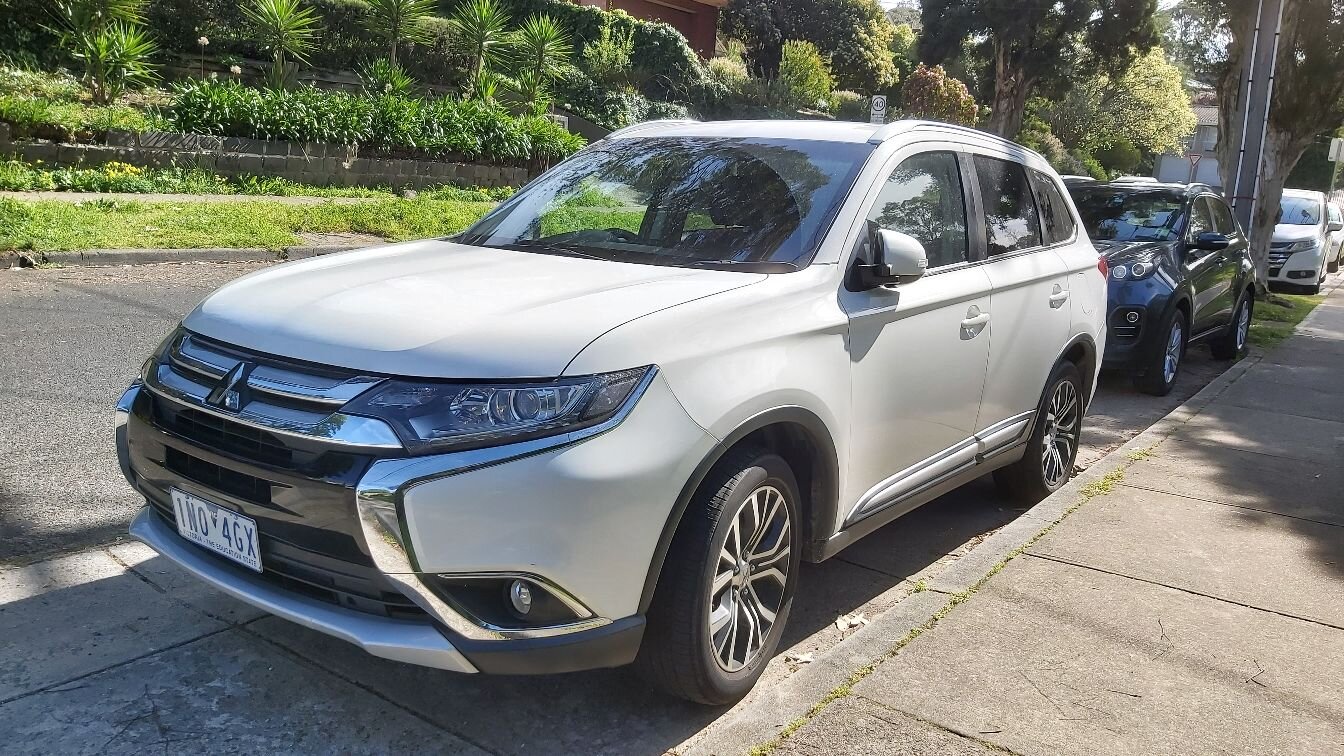2020 Mitsubishi Outlander and Hybrid Review
Outlander offers so much versatility with three drivetrains, seven seats, half-decent towing and is affordable enough for most families. But should you consider the hybrid?
If you’re in the market for a budget-conscious mid-size SUV with seven seats, you don’t have many options.
The larger category of SUV is full of seven-seaters like Kia Sorento, Hyundai Santa Fe, Mitsubishi Pajero Sport, Mazda CX-9 and Toyota Kluger, but they don’t offer a hybrid powertrain.
The Outlander PHEV is kinda missing out on sharing in this company because it’s stuck in the same segment as the RAV4 Hybrid, which I’ve also driven and can tell you is a pretty good car. It’s missing out because it lacks the third row of the proper Outlander range.
Therefore, Outlander PHEV - which stands for plug-in hybrid electric vehicle - costs in the vicinity of a seven-seater, but isn’t one, and has to go up against the RAV. Which arguably has a more effective hybrid system. But not by much (I’ll get to that).
In many ways, you’re better looking at the rest of the Outlander petrol or diesel range because there’s a whole new model coming next year and you’ll get some bargains on the run-out model.
Love or loathe relationship
The Outlander is inherently a family-oriented vehicle which is obvious by the use of durable plastics everywhere from the waist down, in the cabin.
Plenty of car reviews punish carmakers for using ugly, scratchy plastics where the reviewer would prefer leather, suede and alcantara. But that’s because they don’t understand the sinister nature of children and their tools of terror.
In recent (let’s call them) discussions with my other half, scratches have been found in the rear of our car, and I have no idea how they got there. Cars scratch, they cop wear and tear when they’re in-use. For Mitsubishi to use durable plastics instead of faux leather, that’s a benefit to you when it comes time to clean the car and/or on-sell it. Stretched, torn leather never looks good to the next custodian of your fine child conveyance. Credit to Mitsubishi for having the balls to use the right level of wipe-down plastic coverings where boots, sticky fingers and hard-edged kid equipment run rampant.
The front seats are decent for a moderate trip out of a Sunday, as we did visiting the Macedon Ranges on a still-freezing cold March weekend. The second row seat backs are fairly rudimentary in back support, but kids in child seats won’t notice. Adults probably will, but they can always walk.
On a $50,000 SUV, regardless of badge or powertrain, I expect a digital speedometer in 2020. Using Melbourne’s M80 Ring Road or frequenting one of the most active speed camera intersections in the city, as I do, you need to know you’re exact rate of distance covered over time. It’s that simple. My $40k Subaru has a digital speedo.
There’s also discrepancy in the $45k Outlander Exceed petrol and diesel versus the PHEV. The hybrid (asking $50k, remember) gets forward collision mitigation (auto emergency braking), adaptive cruise, lane departure warning, auto headlights and rain-sensing wipers, as do the combustion models, but you don’t get:
Blind-spot warning
Lane change assist
Rear cross-traffic alert
Ultrasonic misacceleration mitigation
360-degree camera system
Front parking sensors
For this reason alone, you might prefer to stick to the Outlander Exceed in either petrol or diesel, because you save about $5000 and get more gear.
And those features do work pretty well in the real world. While I haven’t used the Outlander’s 360-degree camera, I have used it in the Pajero Sport and it does a good job without screaming unimportant warnings at you or redundant information.
Driving the Outlander, you might notice a slight bus-driver type position of the steering wheel, and the air vents which are positioned to either blow warm/cool air directly onto your hands - or straight into your eyes, nose and mouth, no matter how you adjust them. Fortunately, you can also point the vent directly upward so you only feel it on top of your head.
Unfortunately, despite having opted for the seven seats, that extra row (which folds 50:50, by the way) doesn’t get ISOFIX child seat anchorage points; only in row two are ISOFIX points found easily below the seat back. There are top tether points back in third-row economy, so you might have to delegate if you have slightly older kids and a child seat to accommodate for. As far as I can remember, 10-year-olds love third row seats anyway, so you won’t be selling ice to eskimos.
The boot is enormous, however, which is great. And that’s what you came here for. Here are the dimensions for both the hybrid and the combustion Outlander’s boot cavity:
Compared with a Mazda CX-5 which costs up to $50 grand, Outlander Exceed is several thousand less but offers a boot which isn’t quite as wide. CX-5 is 104.9cm wide between the wheelarches, whereas the Outlander is capped at just under a metre. In overall cubic volume, the CX-5 offers 442L (or 1342L second row folded - not that anybody really does that in the real world unless they’re at Bunnings). The Outlander’s 442L and 1608L beat the Mazda, obviously - but you have to evaluate what you appreciate more: outright cubic stowage or creature comfort.
Unequivocally, the CX-5 is a far nicer vehicle to sit in and drive. It’s optimised for tuning out noise vibration and harshness, and puts driver/passenger ergonomics ahead of price competitiveness.
If I can be anecdotal for a moment, 18 months ago on a trip to Sydney from Melbourne, the ASX we’d originally booked to take our stuff from the airport and around had to be upgraded to an Outlander because we simply couldn’t get three adults and an infant, including capsule+base, pram and our sundry luggage and bags in it. Filling every inch or space simply wasn’t gonna work. The five-seat Outlander took everything, with room to spare.
And while we’re talking about that, I don’t think the seven-seat diesel Outlander Exceed at $49k is worth it, especially when you can probably negotiate a top-spec CX-5 down from $51k. You would want to be leveraging the dealer down to about $45 for that budget seven-seat diesel Outlander.
The 991cm of boot length in the five-seat Outlander petrol (preferably the ES +ADAS pack) is probably gonna be the ideal package for those of you with multiple kids on a tight budget.
But this is what’s so good about the Outlander range. You can have pretty much any combination you like. If you’re likely to tow a small trailer or camper, the direct-injection diesel seven-seater can be had for $44k with a six-speed auto and paddleshift, which offers a reasonable (but not class leading) 110kW of maximum power at 3500RPM and 360Nm of max torque between 1500-2750RPM, which is the ideal powerband for hauling three or more heavy, noisy, eating machines and their bikes.
If you can afford the diesel, I suggest getting it, because it comes with a two-tonne braked towing capacity, which is great for anybody living in rural Australia or even the outer suburbs. The petrol engines are only rated for 1600kg. (If you need serious towing, here are four easy, family friendly ute options_)
However, be careful about your payload limits, because when you do the maths and add a towball download limit and Gross Combination Mass, maxing your two-tonne towing limit with Outlander diesel, and adding its 1620kg kerb weight with the 200kg towball download leaves you with 470kg of payload - including everybody and all your gear. Divide 470kg by five (three kids and two adults), that’s 2 x 80kg mum and dad and 3 x 103kg kids and stuff. If mum and dad weigh 90kg each, that’s about 80kg per kid (stuff incl.). Just be careful.
Seven-seat Outlanders come with a space-saver spare wheel, and five-seaters get a full-size spare - unlike the CX-5 which gets a space-saver across the range.
If your family is the adventurous type and is likely to spend a lot for time away from major cities and suburbs, I’d suggest the Outlander’s full-size spare is a serious advantage to consider.
The MItsubishi also has a slightly tighter turning circle of 10.6 metres, versus the 11m in the CX-5; something else to consider in regards to where you live, work and drive on a regular basis.
Outlander gets three powertrain types, although there are actually four configurations. They go like this:
2.0-litre petrol: 110kW @ 6000RPM | 190Nm @ 4200RPM
2.4-litre petrol: 124kW @ 6000RPM | 220Nm @ 4200RPM
2.2-litre turbo diesel: 110kW @ 3500RPM | 360Nm @1500-2750RPM
2.4L petrol hybrid: 94kW @ 4500RPM |199Nm @ 4500RPM
If you need a budget diesel towing vehicle, the Outlander is seriously good value.
The petrol engine is fine, without being great. It has adequate power and together with the CVT transmission it will do the school runs quite well, and you'll appreciate its sufficient cruising ability on freeways with kids in tow in relative safety. In fact, I grew quite fond of it during that aforementioned week-long Sydney trip.
The hybrid was, in my view, quite a good thing to use in a variety of driving situations like to the shops, around the suburbs, in heavy rain (benefitted by AWD), and on a day trip to the Macedon Ranges. Using it entirely in EV mode is a unique advantage for frequent use around town, which you can’t do in a RAV4 hybrid - if 80 per cent of your driving is local, you can notionally do it entirely without burning any petrol.
But you just can’t have seven seats or a full size spare wheel, and the towing is reduced to 1500kg. And you’ll pay for it.
Outlander is 4.7m long, 1.81m wide, 1.71m tall, with 190mm of ground clearance, so consider how well it’s going to fit in your garage, driveway and carport, while also being aware of your local shopping centre or apartment carpark height. These are relatively conservative dimensions, so I can’t see any glaring issues here, but it’s always good to check, especially when it involves kids opening doors into things. Or if you’re starting a new family and have to consider entry and exit for pram/s, capsules and a billion sundry bags just to visit friends two suburbs over. Been there, done that, got the brochure.
In other Outlander considerations, you need to be realistic about whether all-wheel drive is gonna be necessary in your near future.
Have your kids started kindly and camping is a high possibility in the next five years? Or are you about to welcome your first into the world?
Do you live in regional towns or outer suburbs of a metro city where a casual flood or muddy hill are a potential situation? Do you live in a steep area? Maybe your driveway is akin to scaling K2. Then AWD might be worth your while. If everything's flat around you, and you’d rather pour boiling water on yourself than mix it with the mozzie and flies, then save the cash and go front-drive.
And lastly…
If you can’t wait for the new Outlander to arrive sometime next year, then getting the current mod is not going to be to your detriment. In fact, I reckon it’s the smart move getting the model which has been in service for several years with a pretty drama-free life. You just have to accept the fact it won’t be as nice as the new one.
But who cares if you save thousands getting a run out, right?
What the Outlander lacks in the level of refinement found immediately stepping into a Kia Sportage, Mazda CX-5 or even a Subaru Forester, it makes up for in sheer value and practicality.
If you don’t give a shit about how plush your kid-hauler is, of you couldn't give a stuff about drivability or plushness, then Outlander should be the first SUV you look at.
You can have the cheap towing, you can have the torquey diesel, you can have seven seats, or a fairly frugal petrol town car, or you can have the novelty hybrid option (but you have to want a hybrid in order to justify it). The Outlander will do the job, which is what you want.
If you need to belt in a fence post, you don’t use a claw hammer, you pick up the sledgehammer. Right?
Ask me anything about the Mitsubishi Outlander. Curious about the hybrid? What do you wanna know? Send an email to BestFamilyCars.












